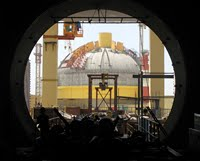The U.S.-India civilian nuclear agreement, signed in October 2008 after intense bilateral negotiations, is a crucial trade deal for both nations, offering India's fledgling civilian nuclear industry the opportunity to access sophisticated U.S. technology, while providing American companies with the possibility of significant commercial benefits from the engagement. However, despite the deal's obvious benefits and the urgency displayed by both countries to get it signed over a year ago, obstacles still remain to making it operational.
To finalize the agreement, the Bush administration overruled longstanding U.S. non-proliferation policy by implicitly recognizing India as a nuclear power. The deal was also a hard political sell for Indian Prime Minister Manmohan Singh, who nearly lost his job seeing it through, due to stiff opposition from the Left parties.
Financially, the U.S. estimates that India will spend $150 billion over the next decade for nuclear power plants, bolstering India's nuclear power generation from its present capacity of 4,000 megawatts to 20,000 MW by 2020.

